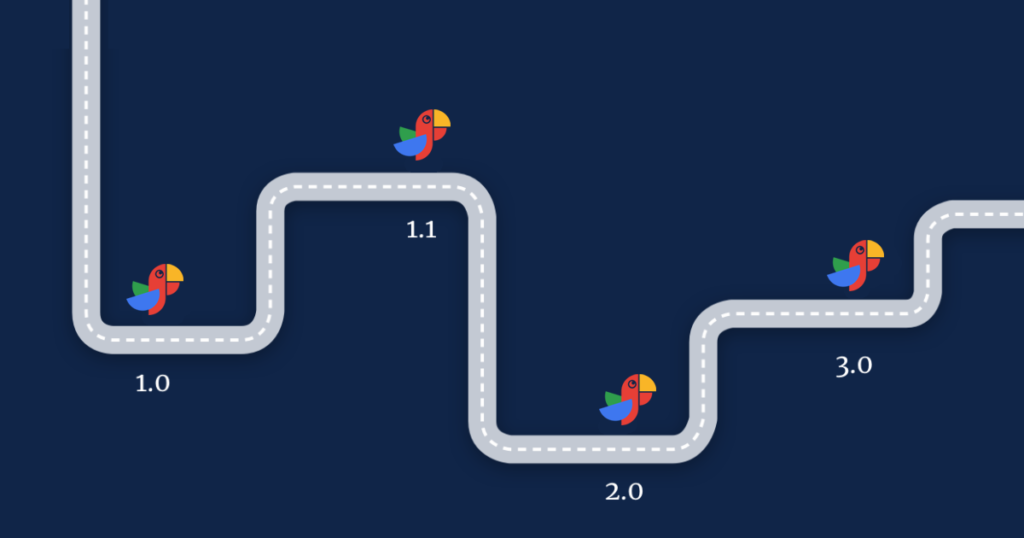Today, most API endpoints aren’t versioned at a granular level, and for good reason. If you tried to version each endpoint individually—or worse, by HTTP method—it would lead to a chaotic and unsustainable mess. This is why APIs are typically versioned as a package: a set of endpoints grouped under a common “API Name” and “API Version.” However, this structure introduces several challenges.
In reality, only a few endpoints may change in a new version. However, maintaining this versioning model means that developers are frequently forced to chase down clients, urging them to upgrade to the latest version. This also complicates maintaining versioned documentation, effectively leading to one of two common scenarios:
1. APIs that remain on version 1 for a decade or more.
2. APIs that reach version 88, incrementing multiple times a year.
Some API producers avoid the problem altogether, while others invest heavily in automation to manage it. However, dealing with these versions is a real pain for the consumer. It often requires analyzing the impact of version changes, conducting tests, and managing a complete release process. The situation worsens when developers rely on multiple APIs with their own versioning schemes. Many developers declare “version bankruptcy” and just fall far behind.
For those who use client SDKs, the complexity compounds further. SDKs usually adhere to semantic versioning (SemVer), like 1.2.3, which rarely aligns with the API versions. Since API version numbers can’t contain periods in URLs, maintaining consistency becomes even more complex. With multiple APIs and corresponding SDKs, version control spirals out of control, and this is a significant reason developers hesitate to adopt client SDKs in the first place.
Our Vision
We envision a future where API producers continue to follow their versioning practices, recognizing that standardizing across the board is unrealistic. Instead, the solution must come from the consumer’s side, with technology designed to manage and simplify the complexity.
The critical capabilities of this vision include:
- Atomic & Automated Cataloging: Dissolving public and internal APIs into their respective operations (functions) while tracking metadata across millions of operations, APIs, and providers.
- Function-based versioning: Instead of versioning entire APIs, each function (API operation) can transcend multiple API versions if its behavior remains unchanged.
- Automatic version analysis: Platform cataloging services that analyze new API versions (via specifications or runtime monitoring) and suggest actions: create new functions, update existing ones, or leave unchanged functions as-is.
- Deprecation tooling: Tools that flag deprecated functions and suggest alternative upgrade paths.
- Scoped client generation: Generating SDKs that pull only relevant functions, even from multiple APIs, creating a lightweight, use-specific client SDK.
- Traffic interpretation and code analysis: Tools that monitor runtime traffic or analyze code to understand which applications and services depend on specific API functions.
- Dependency impact assessments: These services assess usage data and function changes, generating reports on the impact of API updates. This includes detecting schema changes and warning developers of potential issues that might cause service downtime or failures.
- Automated code suggestions: Providing recommended code changes to address dependency issues caused by API updates.
- Impact Notifications: Proactively alert developers about potential API changes that could affect their application so developers do not have to worry about their underlying dependencies.
With this level of support, developers will no longer need to monitor API release notes or manually assess version impacts. The system will handle the complexity and understand the evolution of underlying APIs and the developer’s code. Clear instructions on when and how to modify the code will be provided, allowing developers to work with confidence and trust that they will be proactively alerted.
Additionally, by using microservices as a middleware layer between APIs and client code, the impact of changes can often be scoped to a small subset of services. This makes it easier for AI-driven tools to manage updates and reduces the scope of affected services, keeping the release process lightweight and efficient.
Join Us
We’ve made great strides toward achieving this vision, but there’s still more to accomplish. If these tools are something you’d find valuable, we’d love to collaborate with you to bring them to life. Contact us at hello@polyapi.io—we’re excited to make this journey together.
